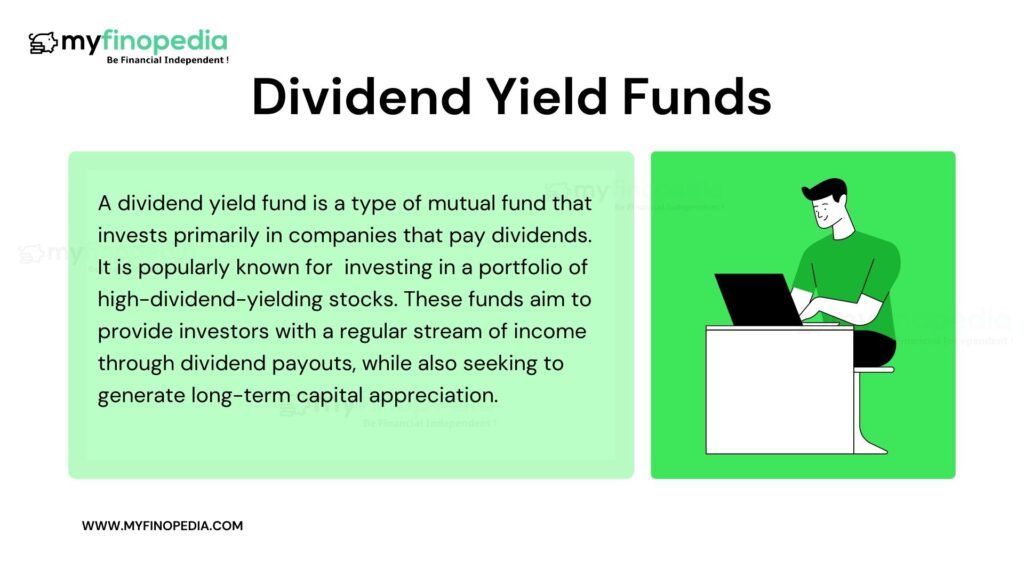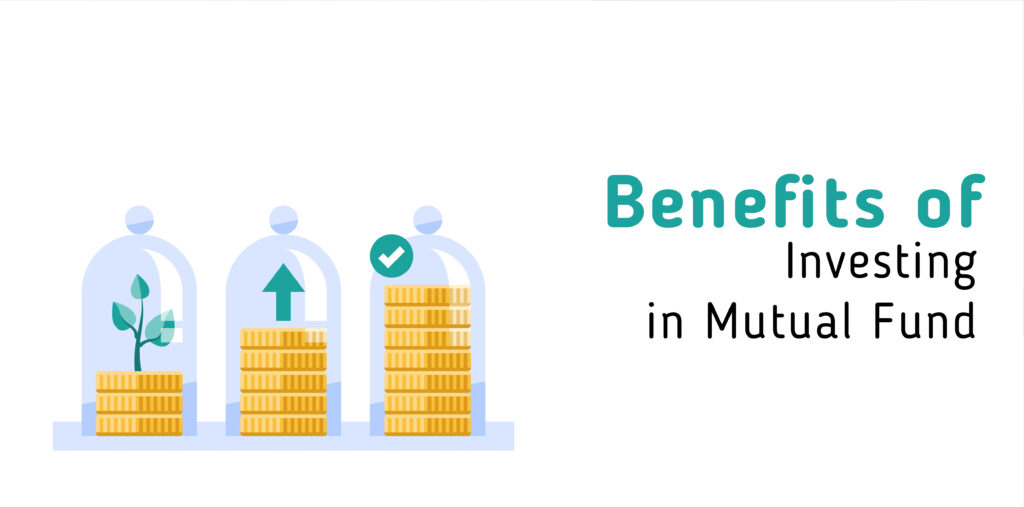Dividend Yield Funds (DYF) are a popular investment choice in India because of their capacity to offer investors with consistent income. Several companies in India provide a portion of their profits to their shareholders in the form of dividends. In this post, we’ll go more into DYFs, looking at what they are, how they work, the benefits they provide, and instances of DYFs in India. We’ll also talk about whether investing in DYFs is a good idea and what considerations you should think about before making a choice. So, let’s continue…
Meaning & Definition:-
A dividend yield fund is a type of mutual fund that invests primarily in companies that pay dividends. It is popularly known for investing in a portfolio of high-dividend-yielding stocks. These funds aim to provide investors with a regular stream of income through dividend payouts, while also seeking to generate long-term capital appreciation.
The ratio of a company’s annual dividend payment to its share price is known as its dividend yield. For example, if a company pays a dividend of Rs. 10 per share and its share price is Rs. 100, then the dividend yield is 10%. A DYF seeks to generate income for investors by investing in high-dividend-yielding companies.
DYFs are designed to provide investors with exposure to companies that have a track record of paying dividends consistently over time. Such companies are typically mature and financially stable, with a strong track record of generating profits and returning a portion of those profits to shareholders in the form of dividends.
Works:-
DYFs typically follow a passive investment strategy, where the fund manager invests in a portfolio of stocks that are part of a particular index, such as the Nifty Dividend Opportunities 50 index. The fund manager may also use a bottom-up approach to stock selection, where they analyze individual stocks and their dividend history to select companies that are likely to provide a regular stream of income to investors.
Once the fund has been invested, the fund manager will continue to monitor the portfolio and may make adjustments to the holdings as necessary to maintain the desired investment objectives of the fund. This could involve selling stocks that are no longer providing a high enough dividend yield, or adding new stocks that have a strong history of paying dividends.
Investors in DYFs typically receive dividend payouts on a regular basis, which can provide a source of regular income. Investors may also benefit from capital appreciation if the value of the underlying stocks in the portfolio increases over time. However, it is important to note that DYFs are subject to market risk and the value of the underlying stocks can fluctuate based on market conditions.
Benefits:-
Regular Income: One of the primary benefits of investing in DYFs is that they provide a regular stream of income to investors. As DYFs invest in high-dividend-yielding stocks, investors receive dividend payouts on a regular basis. This makes DYFs a popular investment option for investors who are looking for a source of regular income from their investments.
Diversification: DYFs provide diversification benefits to investors. By investing in a portfolio of high-dividend-yielding stocks, DYFs reduce the risk associated with investing in individual stocks. This is because the impact of any one stock on the overall performance of the fund is reduced by the presence of multiple stocks in the portfolio. This diversification helps to reduce the overall risk of the investment and can help investors to achieve a more stable return on their investment over the long-term.
Low-Cost: DYFs are typically low-cost investment options, making them an affordable option for investors. This is because they typically follow a passive investment strategy, where the fund manager invests in a portfolio of stocks that are part of a particular index, such as the Nifty Dividend Opportunities 50 index. As a result, the fees associated with managing the fund are lower than actively managed funds.
Is it a good idea to invest in DYFs?
Investing in DYFs can be a good idea for investors who are looking for regular income and diversification. However, there are several factors that investors should consider before investing in DYFs, including:
Risk Tolerance: DYFs are still equity-based mutual funds, and as such, they come with risks. Investors should assess their risk tolerance and invest accordingly.
Fund Performance: Investors should carefully evaluate the historical performance of the fund and its underlying holdings before investing.
Investment Horizon: DYFs are a long-term investment option, and investors should have a long-term investment horizon to benefit from the regular income generated by the fund.
In India, dividends are taxed differently depending on whether they are paid by domestic companies or foreign companies. Dividends paid by domestic companies are taxed at a flat rate of 10% for individual investors, while dividends paid by foreign companies are taxed at the individual investor’s applicable income tax rate.
However, in 2020, the Indian government announced changes to the taxation of dividends, which now make DYFs less attractive from a tax perspective. Previously, dividends paid by companies were tax-free in the hands of investors, but now dividends are taxed at the applicable income tax rate.
This change in taxation has made DYFs less attractive as an investment option for individuals who are looking for tax-efficient investments. It is important for investors to understand the tax implications of investing in DYFs and to consider their tax position before investing.
In summary, DYFs are a popular investment option in India that provide investors with regular income and diversification benefits. However, investors should carefully consider their risk tolerance, investment horizon, and the historical performance of the fund before investing. With careful consideration and due diligence, investing in DYFs can be a good way for investors to generate regular income while diversifying their portfolio.






